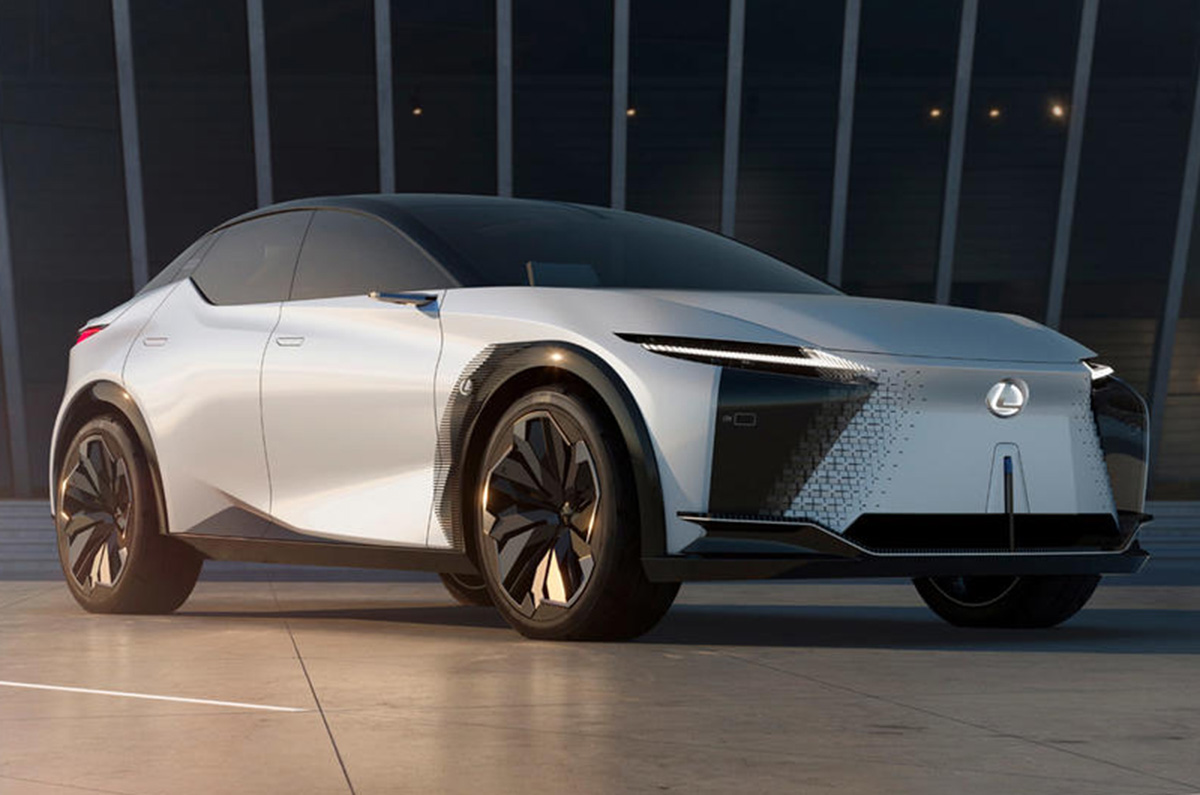
The new Lexus LF-Z EV concept has been unveiled to give a glimpse of the styling, technology and performance the brand intends to give its next-generation electric cars.
- Lexus LF-Z EV concept sits on a new, dedicated EV platform
- Features a single 543hp, rear-mounted motor
- 90kWh lithium-ion battery offers 600km WLTP-rated range
Lexus LF-Z concept: design
The LF-Z concept gives clues about what to expect from the brand’s new-age electric cars. Unlike Lexus’ first production EV, the UX 300e, the LF-Z sits atop a new, dedicated EV platform and appears lower-slung, with fewer SUV-inspired design cues, in line with its performance aspirations.
While the ‘spindle’ motif at the car’s front references the grille shape used by Lexus’ current cars, the LF-Z points to a drastically different design for the upcoming electric Lexus models. Some of its details will be heavily toned down for production, though, such as the unique wheel-arch designs and prominent roof fin.
However, Lexus hints that the slim rear lights and new brand logo will become a hallmark of its future EVs.
Lexus LF-Z concept: interior and features
The interior layout – which Lexus refers to as a cockpit – suggests a driver focus for the new EV family. An augmented reality head-up display and steering-wheel mounted controls seek to minimise driver distractions, while low-mounted displays, pillarless doors and a dimmable panoramic roof are said to create a “feeling of openness.”
Artificial intelligence technology in the LF-Z allows the car to “act like a lifestyle concierge” by giving navigation assistance and learning the driver’s preferences and characteristics. Various functions can be operated using a dedicated phone app.
Lexus LF-Z concept: powertrain and battery
The LF-Z is powered by a rear-mounted motor that produces 543hp and 700Nm, and is equipped with a new Direct4 four-wheel-drive system that can send power to the front, rear or both axles as required. The 0-100kph sprint can be dispatched in a claimed 3.0sec, while the top speed is said to be 200kph.
The steering, uniquely, uses a drive-by-wire system, which eliminates the mechanical link between the steering wheel and the drive wheels. Lexus says this improves precision and reduces vibration. No series-production car has yet used this technology.
A 90kWh lithium-ion battery is mounted lengthways under the car’s floor. It can charge at up to 150kW and offers a WLTP-certified range of 600km.
Lexus’ future electrification plans
The Japanese luxury carmaker was one of the frontrunners in the first wave of electrified production cars. It now aims to build on that heritage by launching 20 new or upgraded models – of which 10 will be hybrid, plug-in hybrid or fully electric – by 2025.
Lexus has hinted at plans to launch sportscars, “cars appropriate for chauffeur driving” and “models in entirely new categories”, as part of this new strategy, and it will reveal the first two additions to its line-up later this year.
Also see:
2021 Lexus Design Award India winners announced
Updated Lexus LS 500h sedan launched at Rs 1.91 crore
2021 Lexus IS revealed with fresh styling, new tech and enhanced chassis
Comments
Post a Comment